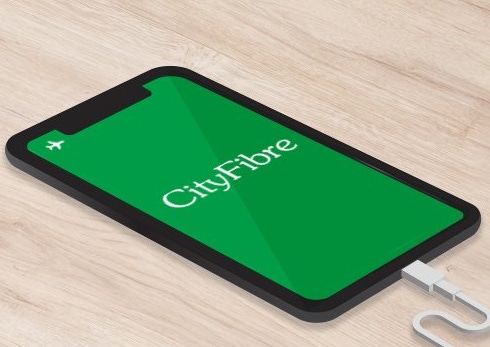Arqiva and CityFibre have unveiled the details of a new partnership which will see the pair create a wholesale, 5G-ready small cell infrastructure for backhaul in the London Borough of Hammersmith & Fulham.
December 4, 2018

Arqiva and CityFibre have unveiled the details of a new partnership which will see the pair create a wholesale, 5G-ready small cell infrastructure for backhaul in the London Borough of Hammersmith & Fulham.
With Hammersmith & Fulham fifth in the list of London’s most densely populated borough’s, the demand for mobile connectivity has been aggressively increasing in recent years. With multi-media trends continuing to strain the networks, this challenge will only be compounded over the coming months and years; enter the Arqiva and CityFibre super-heroes.
“This pilot network is a massive step forward for mobile and fixed wireless connectivity in London,” said David Crawford, MD of Telecoms & M2M at Arqiva. “We are showing that ubiquitous high-speed connections using dark fibre and small cells are possible and we are delighted to be leading the way with our pilot in Hammersmith & Fulham. As demand for data continues to increase exponentially, the pressures on networks will continue to grow and densification using street furniture and small cells is critical to deliver the network of the future. Our aim with this project is to show the business and consumer benefits of this architecture and a successful rollout in Hammersmith & Fulham can be the prelude to a wider deployment in future.”
“This has been an invaluable exercise to demonstrate the capability of our fibre networks to support the next generation of 5G small cells and services,” said Rob Hamlin, Commercial Director at CityFibre. “5G networks will only work on fibre and a new modern infrastructure is needed at scale to support them. With our £2.5bn rollout of full fibre infrastructure to 5 million homes already underway, we are creating a 5G-ready network platform nationwide that will provide the best network at the best economics for Mobile Network Operators.”
As part of the initiative, CityFibre will install a 15 km high density fibre network, which is multi-operator capable, in the London Borough of Hammersmith & Fulham. The pilot will explore the idea of centralised C-Ran architecture and 5G, providing backhaul capacity to allow any MNO the ability to quickly and easily deploy small cells on the borough’s street assets. Arqiva was awarded the concession contract with Hammersmith & Fulham in 2014, allowing the company to use street furniture, such as lampposts, to place communications equipment. The network will consist of a fibre ring with over 90 cabinets to enable the sharing of the infrastructure.
Considering the increased network densification demanded by 5G, new ideas will have to be sought to plug the gaps in connectivity (both not spots and areas will higher data demands). Arqiva has been working closely with the borough to select the most appropriate locations for the infrastructure to provide the greatest benefit to users, though this is only one of the boroughs where it has such a contract. The others are Barnet, Brent, Camden, Haringey, Harrow, Hounslow, Islington, Kingston-Upon-Thames, Lambeth, Merton, Richmond upon Thames, Waltham Forest and Wandsworth.
The idea itself is a pretty interesting one, and perhaps a sign of the future. The UK is an excellent example of a market which performs when in the international economic league, but with a comparatively small population and low ARPUs, telcos might struggle to deploy networks on the same aggressive timetable as some. Some have suggested this sluggish lurch towards tomorrows connectivity standard could have a detrimental impact on competitiveness on the global stage. This is an example of another infrastructure organization accepting some of the investment risk, relieving some of the pressure on the telcos CAPEX margin, to allow them to prioritise investments elsewhere.
Whether such an idea becomes commonplace throughout the UK remains to be seen, though the blueprints are certainly there for CityFibre. While it might not be the density required for 5G-ready small cell infrastructure, CityFibre has already laid the foundational fibre-spine in various large towns and cities throughout the UK, such as Milton Keynes, Peterborough and Aberdeen. This network has become the basis for Vodafone’s entry into the broadband business, though could very well act as the same foundation for 5G-ready small cell infrastructure. And when you consider the progress which is being made in the network slicing segment, allowing companies to create dedicated, virtualised network slices for customers, the signs are certainly promising.
About the Author(s)
You May Also Like








.png?width=300&auto=webp&quality=80&disable=upscale)


_1.jpg?width=300&auto=webp&quality=80&disable=upscale)


.png?width=800&auto=webp&quality=80&disable=upscale)